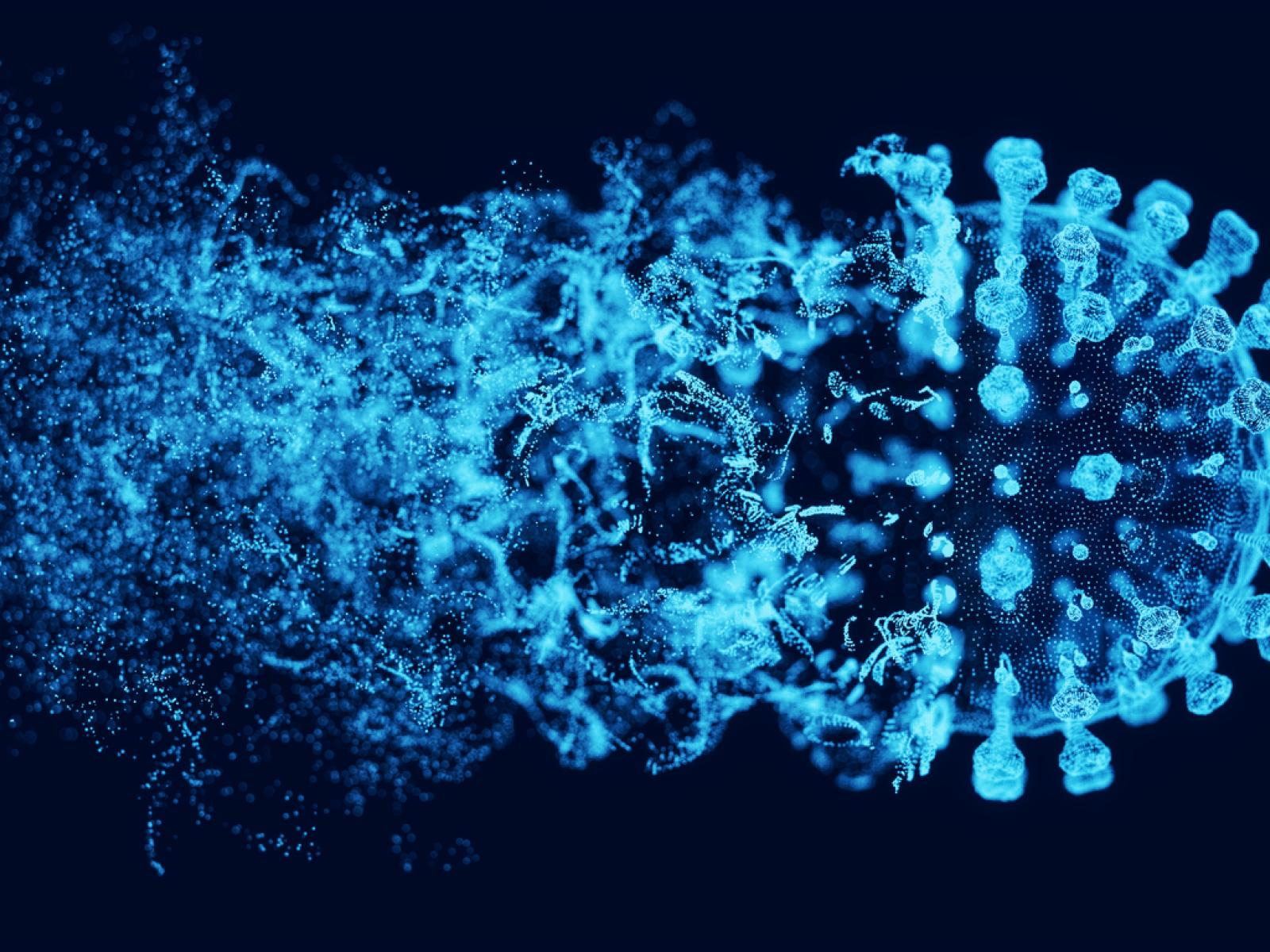PNNL BRaVEly Supports National Preparedness Efforts Against Pathogenic Threats
Funding awards to PNNL scientists will help prepare against future pathogenic biothreats

PNNL researchers are helping the U.S. prepare for biothreats by characterizing the molecular structure of pathogens.
(Illustration by imaginima | iStockphoto.com)
Scientists at Pacific Northwest National Laboratory (PNNL) were awarded nearly $12 million to better understand pathogens, how they spread, and how to prepare the nation against future outbreaks. This funding comes from the U.S. Department of Energy’s (DOE’s) $112 million Biopreparedness Research Virtual Environment (BRaVE) initiative, which seeks to build on prior research successes in the fight against COVID-19.
Over the next three years, PNNL scientists will lead and collaborate with other institutions on three large-scale biopreparedness efforts.
Modeling the molecular basis of disease transmission
A critical component of biopreparedness is rapid access to large, integrated datasets. To begin addressing this need, a multi-institutional team led by PNNL was awarded $10.8 million in funding to develop a model platform that studies the molecular interactions between hosts and pathogens. Drawing together datasets dispersed across a range of institutions, this “Google Earth”-like platform will provide researchers rapid information about the spatial features of host–pathogen interactions, as well as the ability to drill down to molecular details.
The platform will model cyanobacteria P. marinus and its constantly adapting pathogens by integrating a wide range of capabilities. Some of these capabilities include artificial intelligence (AI) and machine learning (ML) resources for molecular and systems modeling, genomic sequencing to track the evolutionary change of pathogens, cryogenic transmission electron microscopy to create molecular images of the pathogens, analysis of multi-omics datasets, and computational chemistry support through the NWChem software program. Among other capabilities brought to this project by university and national laboratory collaborators, is the software platform for simulating a living cell, Lattice Microbes, developed by the University of Illinois, Urbana-Champaign.
PNNL project co-leads are Margaret Cheung and David Pollock. PNNL co-collaborators include James Evans, Marat Valiev, and Weijun Qian.
Support for computational resources in molecular and systems modeling, as well as the cryogenic transmission electron microscopy and mass spectrometry resources, are provided by the Environmental Molecular Sciences Laboratory (EMSL), a DOE user facility located on the PNNL campus.
Plant–pathogen interactions for resilient bioenergy crops
In the effort to scale up production of the nation’s bioenergy crops, addressing pathogenic impacts is critical to maintaining quality and yield. To do this, we need to stay one step ahead of the ever-evolving array of plant pathogens affecting crops like sorghum. Led by Brookhaven National Laboratory, in partnership with PNNL and several other national laboratories and universities, researchers will integrate systems biology, biomolecular characterization, and synthetic biology—coupled with AI- and ML-driven computation—to provide foundational insights into the dynamics of plant–pathogen interactions.
PNNL researchers, led by Ljiljana Paša-Tolić, will uncover and characterize the molecular interactions between sorghum and the fungal pathogen, C. sublineola, by using state-of-the-art mass spectrometry resources available at EMSL.
Expediting vaccine and drug development efforts
When threats from poorly understood pathogens become widespread, several challenges can delay vaccine and drug development. Tackling these issues is a multi-institutional research effort led by DOE’s SLAC National Accelerator Laboratory in partnership with PNNL, the La Jolla Institute for Immunology, and others.
The primary challenge is the large amount of time needed to analyze a pathogen’s protein structure. Understanding how a pathogen is built helps researchers uncover how it interacts with the host’s immune system. Analyses are further delayed when samples provide only faint or diluted results, leading to ambiguous data.
Scientists from PNNL, led by Jan Strube and Panos Stinis, will provide expertise in AI, as well as leverage their physics-based PhILMs ML software to improve and expedite analysis of pathogen data.
# # #
EMSL, the Environmental Molecular Sciences Laboratory, is a DOE Office of Science user facility that accelerates scientific discovery and pioneers new capabilities to understand biological and environmental processes across temporal and spatial scales.
Published: September 11, 2023